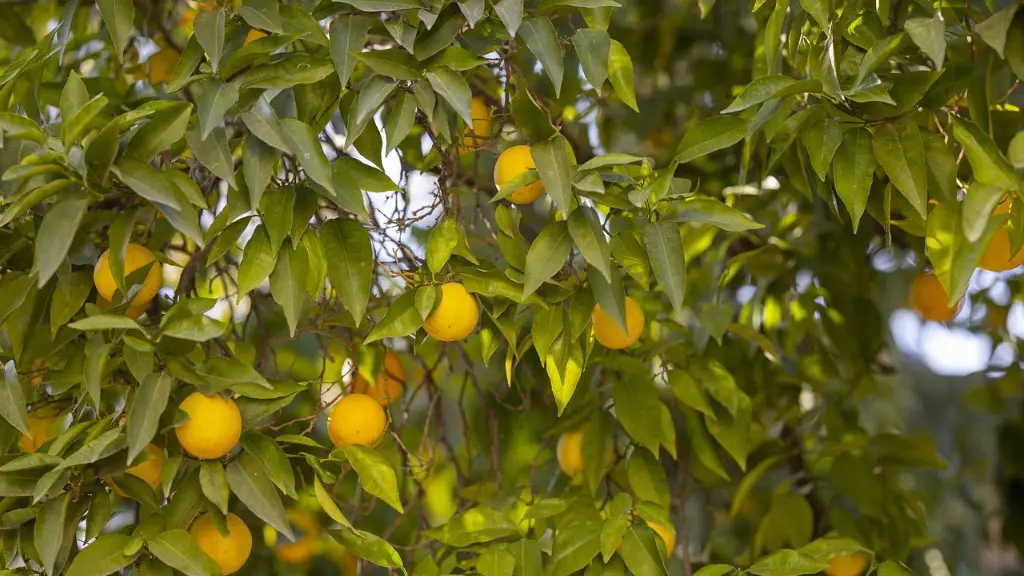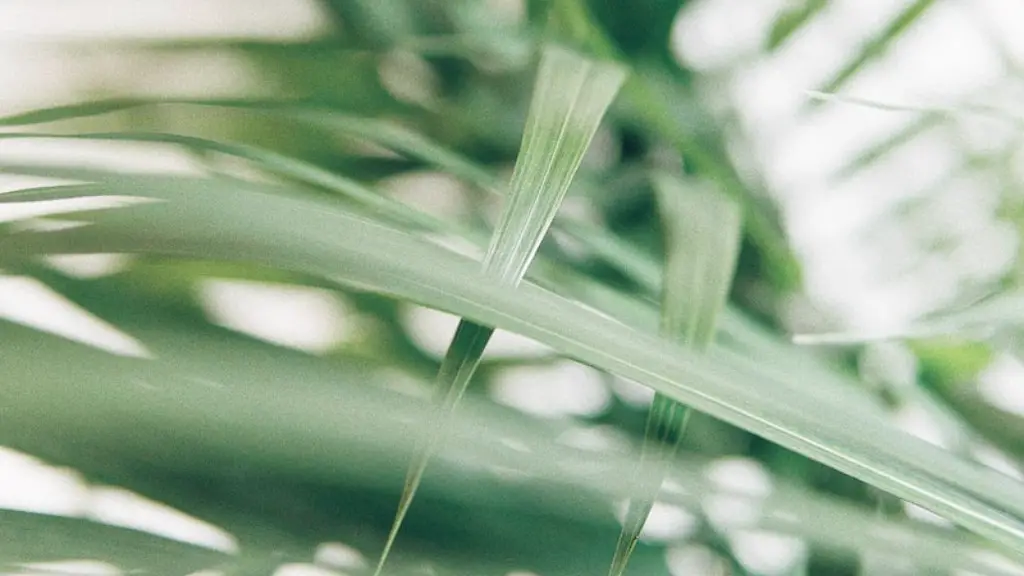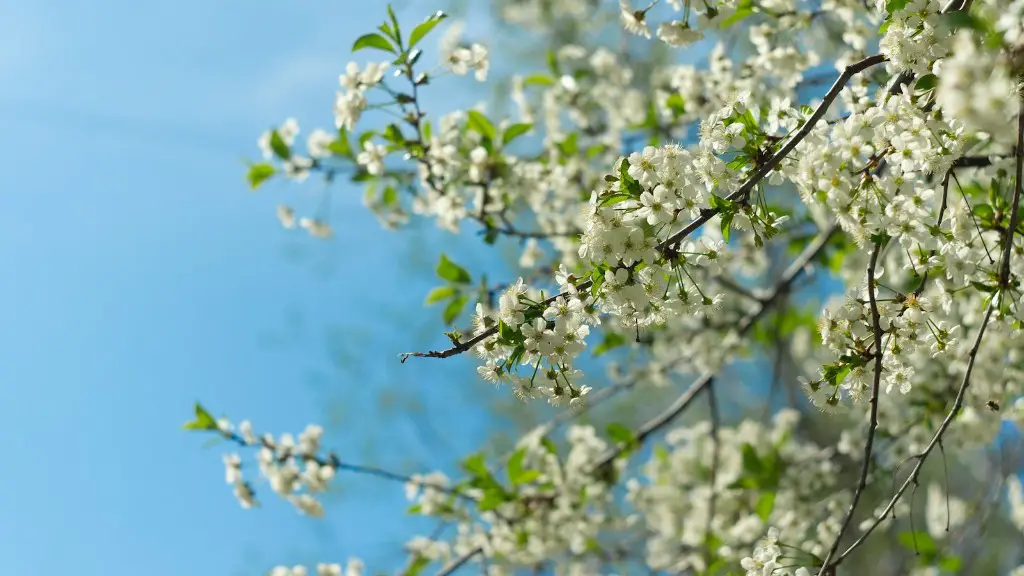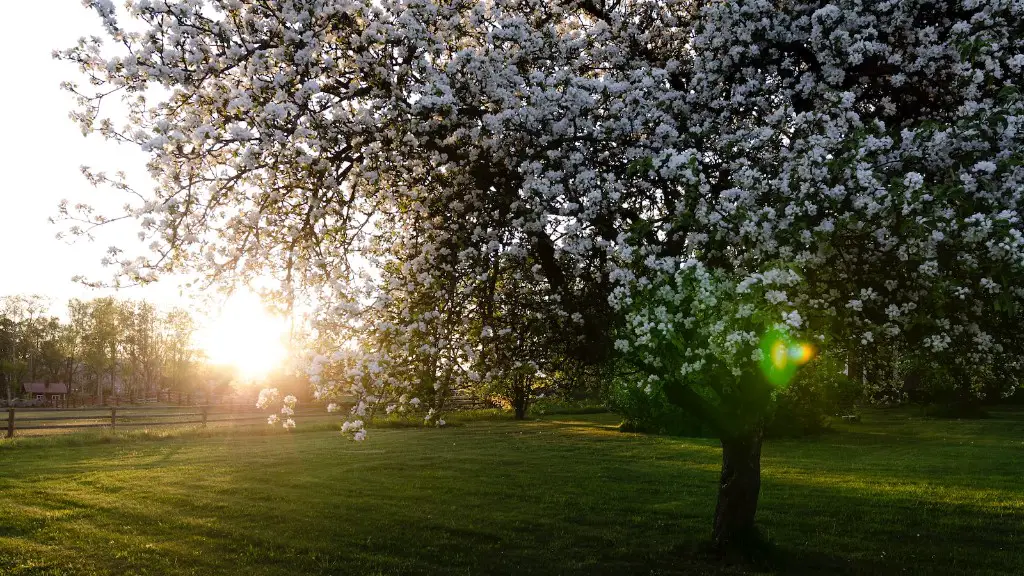Lemon trees can be grown from seeds. Starting them can be an enjoyable experience for green thumbs and even those with very little experience in nurturing plants. Here are seven steps to begin:
1. Begin by thoroughly washing and drying the lemon seeds so that any foreign matter has been removed. Then, place the seeds between two wet paper towels and place them in a clear container. Position the container in a warm, indirect light. The seeds must be kept moist, but not overly wet.
2. Throw out any seeds that have not sprouted after a few weeks, as these are likely to be infertile or dead. The remaining seeds should be planted into individual pots or containers filled with a nutrient rich potting mix.
3. Place the containers in a warm and sunny location until the plants begin to mature. Then, gradually introduce the plants to cooler areas and more direct light. This will help the plants become hardier and ready for transplanting into their permanent home outside.
4. When growing lemon trees from seeds, it is important to fertilize them with a balanced fertilizer every five to six weeks, depending on the season. This will help them to develop strong and healthy root systems.
5. When it is time to transplant the young lemon tree, make sure to dig a hole that gives the plant plenty of room to spread its roots. The hole should also be deep enough to accommodate the entire root system. Amend the soil before planting with compost and/or humus.
6. After planting, water the tree thoroughly to settle the soil around the roots. Then, water it again every few days, depending on the climate and weather conditions.
7. Before letting your lemon tree grow on its own, prune it lightly so that it will have a strong shape for its future growth. Pruning also helps to control the size of the tree, making it easier to manage.
What to Watch Out For
Even though starting lemon trees from seeds has many advantages, there are also a few things to be aware of. For instance, lemon trees grown from seeds are not true to their parent. The fruits may not look the same, have different tastes and ripen at different times.
In addition, lemon trees can take up to three years to produce fruit. This means that even though you may have an early success with starting a lemon tree, it could take some time before it produces any lemons that you can use.
Finally, lemon trees can be very picky when it comes to their growing conditions. They prefer a warm, sunny climate and need to be protected from days or nights that are too cold. They also like soil that is well-draining and free of weeds, pests and disease. If these conditions are not met, the trees may not thrive.
Other Tips
When planting your lemon tree, remember to give it plenty of space to grow. Planting it too close to other trees and shrubs will limit the amount of sunlight and air circulation that the tree receives.
It is also important to water your tree regularly, especially during the warmer months. Lemon trees need to be watered about once or twice a week to ensure that the soil remains moist, but not soggy. If the soil is kept too dry, the leaves will start to droop and the tree may become unhealthy.
Lastly, if you want to produce a good crop, it is important to mulch around the tree. Mulching helps to conserve moisture and control weeds, as well as keep the roots cool during the heat of the summer.
How to Harvest Lemons
When the lemons on your tree ripen, you can start harvesting them. Generally, lemons reach their peak ripeness when they turn a light yellow or orange color. Be sure to wear gloves when handling and harvesting the lemons, as the juice and oils from the skin can irritate the skin.
Picking the lemons from the tree is the easiest way to harvest them, however, if the tree is very tall, you may need to use a ladder. For this reason, it is a good idea to keep the tree pruned to a manageable size. If using a ladder, make sure it is on level ground and always keep three points of contact (one hand one foot, two hands, etc.) for safety.
Once the lemons are harvested, be sure to store them at temperatures around 45 degrees Fahrenheit. This helps to keep them fresh and will increase the shelf life. They can also be frozen for longer storage times.
Diseases & Pests to Watch Out For
Due to the nature of lemon trees, they can be prone to pest and disease problems. Monitor your tree regularly and look out for any signs of distress, such as leaves that are discolored or drooping. If you detect any signs of pest or disease issues, take proper action to protect your tree.
If you see any crawling bugs on the leaves or fouling of the soil, you may have an infestation. Insecticidal soaps, horticultural oils and other environmentally friendly methods can help to control many pests. Be sure to read labels thoroughly and follow instructions to ensure the safety of your tree.
If you see any discoloration or spotting of the leaves, it could be a sign of a fungal disease. Fungicides are often used to treat these common diseases, but always be sure you are using a product specifically made for citrus trees.
Planting Tips
When planting a lemon tree from seed, there are a few things to remember. It is important to use a nutrient-rich potting mix and to make sure the hole is deep enough to accommodate the entire root system. Additionally, remember to water the tree thoroughly both before and after planting.
It is also important to position the tree so that it is getting optimal sunlight. Lemon trees thrive best when they get at least six to eight hours of direct sunlight each day. If the location does not receive this amount of light, you may want to consider installing a grow light.
When choosing the right pot or container for your lemon tree, make sure to select one that is well-draining and has plenty of room for the tree to grow. It is also a good idea to select a pot with drainage holes since this will help to keep the soil from becoming soggy.
Finally, use fertilizer regularly to give your lemon tree the nutrients it needs to thrive. Once established, your lemon tree should be a source of joy and beautiful fruit for many years to come!





